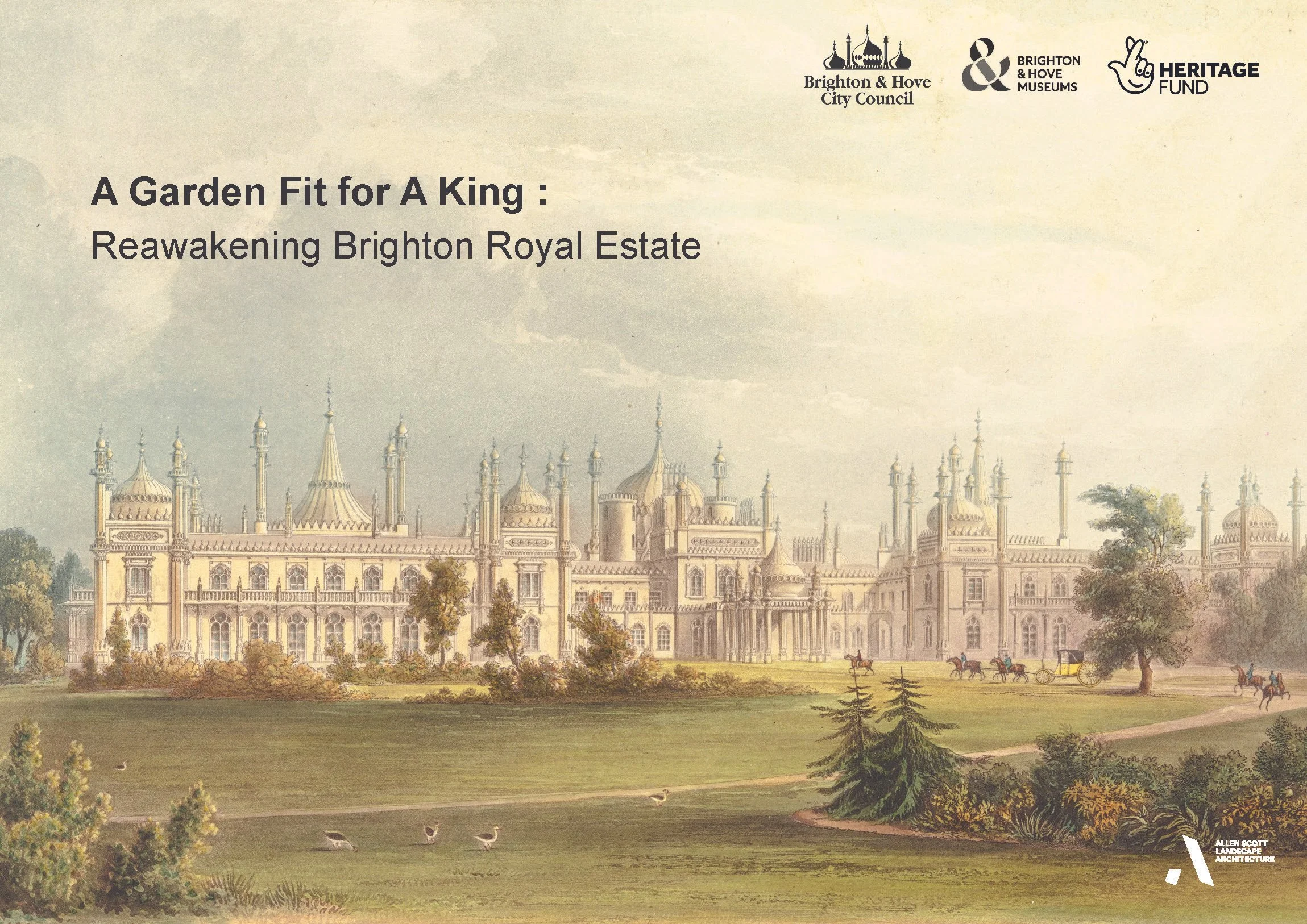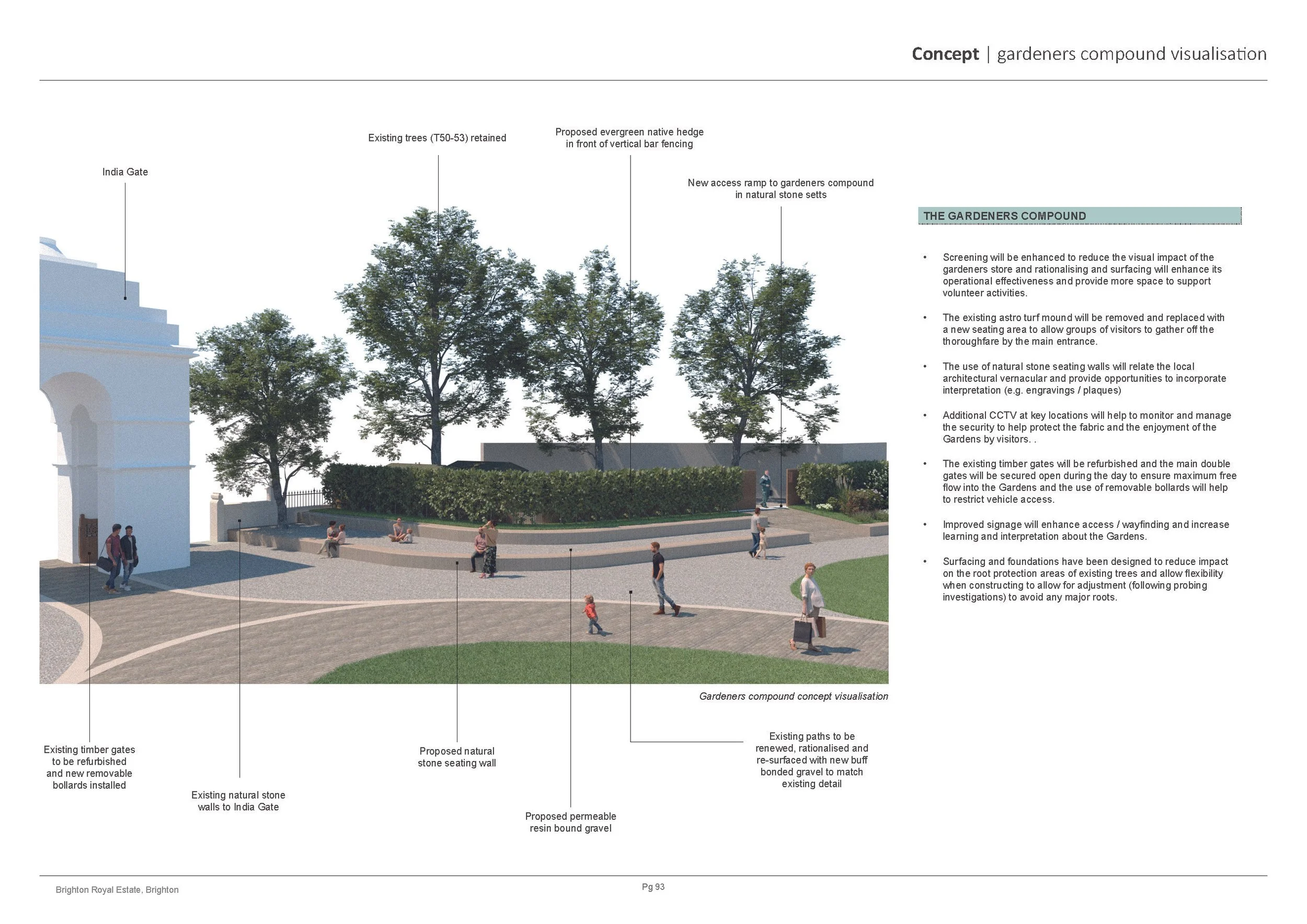The Royal Pavilion Gardens
Allen Scott was appointed by Brighton & Hove City Council as the Lead Consultant for a multidisciplinary team on the National Lottery Heritage Fund restoration of the Royal Pavilion Gardens in Brighton. In collaboration with the wider project team and Brighton & Hove Museums, Allen Scott developed proposals to conserve the Grade II Listed gardens, addressing the challenges affecting the historic fabric, while enhancing site-wide infrastructure and facilities.
Key proposals include the conservation of historic walls, railings, listed lighting columns and the path network. The planting beds will be fully restored using the original planting palettes, adapted to suit current soil conditions and incorporating climate-resilient species. Additional improvements focus on drainage, irrigation and fencing. The project also introduces new operational facilities, including a gardeners’ compound, outdoor learning space, refuse store and a Changing Places facility.
Client: Brighton & Hove City Council
Role: Lead Consultant / Landscape Architect
Value: £3.6m (capital works)
Key Elements: conservation of listed structures / planting design / detailed hard works / access improvements / lighting / interpretation
RIBA Stages: 1-6
Partners: B&HM / BHCC / BD&BF / Focus Consultants / Huntley Cartwright / CTP / RHP / Hawden MEP / SR Historic Environment
Project Status: RIBA 4 in progress
The Royal Pavilion Garden is a site of considerable historic, aesthetic and community importance. Originally designed by John Nash in the early 19th century as a Regency-style private royal garden, it provided the landscape setting for the Royal Pavilion, an opulent architectural masterpiece. The garden's significance stems not only from its connection to the Pavilion, but also as one of the few surviving Regency gardens in England. Nash’s innovative approach brought contemporary aesthetics into garden design, influencing landscape architecture during that period.
However, over time, the original Nash design became eroded and lost. Attempts were made in the 1980s and 1990s to recreate elements of Nash’s picturesque landscape, restoring parts of the garden. This re-creation, though informed by historical documents, faced physical limitations, and as a result, the garden today is a partial restoration rather than a fully authentic reproduction. Despite this, it retains significant historical and evidential value, providing insight into how a Regency garden would have been laid out, planted and maintained.
Adding to the garden’s historic value are four Nash views, captured by A.C. Pugin’s aquatints, which provide key evidence of the garden’s original layout and the views it was designed to frame. The garden is an integral part of the wider Royal Pavilion Estate, which together form a significant architectural statement. The relationship between the Pavilion and the garden enhances both their historical resonance, with the garden serving as the primary landscape setting for the Pavilion.
Since 1851, the garden has transitioned from a private royal space to a public park, offering Brighton’s residents and visitors an accessible green space for recreation and events. Today, it serves as a venue for both formal and informal gatherings, supported by amenities such as the café and hosting various events all year round. With over 5 million people passing through the gardens annually, its communal use has become a fundamental aspect of its significance. This blend of historic and contemporary uses makes the Royal Pavilion Garden an essential cultural and green space in the heart of Brighton, embodying over 165 years of public life.














